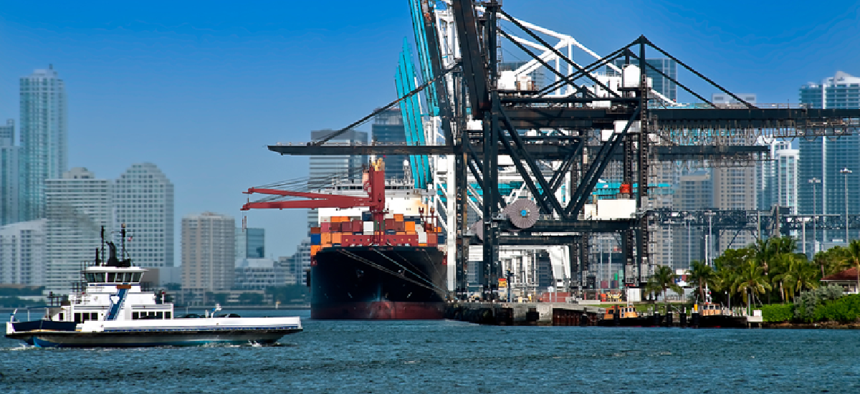Florida ports get situational awareness


Connecting state and local government leaders
By assimilating existing systems, sensors and workflows into a common operation picture, CommandBridge will give users a full view into what’s happening at the ports.
Instead of making phone calls to share information with other ports, officials at most of Florida’s 15 seaports will soon be able to communicate with one another via a shared platform that also gives them a common operating picture.
The Florida Seaport Transportation and Economic Development Council (FSTED) awarded a $500,000 contract to ARES Security to provide CommandBridge, a platform that will enable the ports to share information with one another and with state and local government agencies. The company announced the deal April 16.
“Daily, multiple conference calls can be not the best way to communicate,” said Michael Rubin, vice president of governmental affairs and project manager for the Florida Ports Council, which runs FSTED. “A hundred people on a conference call talking over each other…. There’s got to be a better way to do this kind of thing.”
Council officials are betting on CommandBridge to be that better way. By assimilating existing systems, sensors and workflows into a common operation picture, CommandBridge will give users a full view into what’s happening at the ports. The platform’s rules engine processes the data collected and sends alerts when it detects anomalous activity related to either operations or security.
“Rather than be on the phone all the time, the state will have a documented big picture of what goes on at the ports,” said Jeffrey Brown, ARES’ senior vice president for critical infrastructure and public safety.
The ports can also customize the platform. For example, they can create zones around critical areas so that if a craft enters that zone, an alert goes out.
In case of an emergency that affects multiple ports, such as a hurricane, CommandBridge will provide a common operating picture and send situation reports in near-real time. Plans are in place to integrate cameras so that the state's Department of Emergency Management will be able to view activities at the ports, especially before, during and after a hurricane, Brown said.
CommandBridge has a graphical user interface that displays maps such as Google Maps or nautical charts showing vessel movements. For ports using a geographic information system and Esri files, ARES can import them into the common operating picture.
Additionally, the platform will integrate with the Maritime Port Security Information Sharing and Analysis Organization’s cybersecurity alerting system. MPS-ISAO will send daily briefs through the platform, which will especially help smaller ports that might lack IT security staff learn about threats quickly. General information will be sent via email to end users, but high alerts will go out through the CommandBridge common operating picture, Brown said.
“This is a hosted environment, so we’ll have servers … in secure and resilient facilities that will be redundant,” Brown said. “The infrastructure in and of itself will be strong to withstand the effects of a natural event, whether it be a hurricane or tornado, but it will also be at a second site where if one site goes down, there will be no interruption of service," he said. Plus, the ports wont "have to worry about the maintenance of additional servers onsite, and it’s managed for them,” he added.
FSTED chose CommandBridge because four ports -- Tampa, Canaveral, Everglades and Palm Beach -- were already using it for daily operations. Rubin said nine or 10 of the 15 ports will become users, while oversight of small ports might fall to other entities. For instance, the Key West Police Department will likely use CommandBridge to manage the Port of Key West, he said, because the port authority falls under the city’s purview.
In total, up to 14 ports and 10 other state and regional agencies will use the platform to streamline communications and operations during regional or statewide events.
With the 2018 hurricane season fast approaching, Rubin said the goal is to roll out a final platform at the end of August, when the storms tend to become more frequent. He aims to start testing CommandBridge in late May or early June.
“If it allows us to communicate better and allows us to communicate for emergency response, then we think it’s an effective use of the money,” he said.




